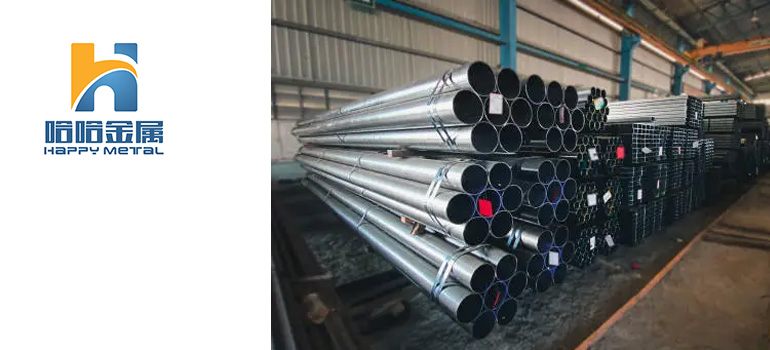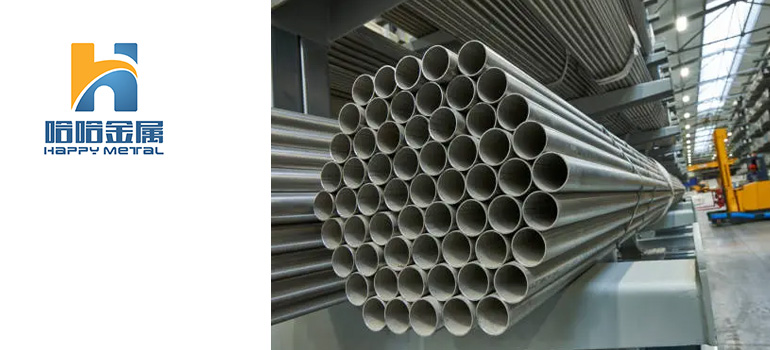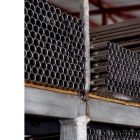Summary:
Best Practices for Maintaining Your Stainless Steel Pipes: A Cleaning Guide
What is Stainless Steel Pipe Cleaning
Why Regular Cleaning is Crucial for Stainless Steel Pipes
Essential Tools and Equipment for Effective Cleaning
Step-by-Step Stainless Steel Pipe Cleaning Process
Common Challenges and Solutions in Stainless Steel Pipe Cleaning
What is Stainless Steel Pipe Cleaning?
Stainless steel pipe cleaning is a crucial maintenance process designed to remove contaminants, buildup, and residues from stainless steel pipes. Over time, pipes used in various industries, from food processing to chemical manufacturing, can accumulate dirt, grease, and scale. Effective cleaning not only helps in maintaining the aesthetic appeal of the pipes but also ensures they continue to function efficiently and safely.
Regular cleaning involves a series of steps and methods tailored to the specific needs of the pipes and the nature of the contaminants. It can range from simple manual scrubbing to using specialized chemicals and high-pressure equipment. The goal is to restore the pipes to their optimal condition, preventing potential issues like blockages or reduced flow rates.
Why Regular Cleaning is Crucial for Stainless Steel Pipes
Preventing Corrosion: Stainless steel pipes are known for their resistance to corrosion, but this doesn’t mean they are immune. Over time, buildup of contaminants and exposure to harsh environments can still lead to corrosion if not properly managed. Regular cleaning helps to remove corrosive substances and prevents long-term damage to the pipes.
Enhancing Longevity: Clean pipes are less likely to experience premature wear and tear. By keeping your stainless steel pipes clean, you extend their operational lifespan, reducing the need for costly repairs or replacements. Regular maintenance ensures that the pipes remain in good condition and continue to perform as expected.
Ensuring Optimal Performance: Accumulated debris and buildup can affect the flow rate and efficiency of the pipes. Whether they are part of a complex industrial system or a simple plumbing setup, clean pipes guarantee that fluids or gases flow smoothly without interruptions. This not only improves the overall efficiency of your system but also prevents potential system failures or malfunctions.
In summary, understanding the importance of stainless steel pipe cleaning is key to maintaining the integrity and performance of your pipes. By regularly removing contaminants and performing proper maintenance, you ensure that your pipes continue to operate efficiently, remain free from corrosion, and have a longer service life.
Essential Tools and Equipment for Effective Cleaning

Recommended Cleaning Tools
Brushes and Scrubbers: Brushes are a fundamental tool for cleaning stainless steel pipes, especially when dealing with stubborn grime or buildup. Wire brushes, nylon brushes, and pipe brushes come in various sizes to fit different pipe diameters. Wire brushes are excellent for removing heavy deposits, while nylon brushes are more suitable for delicate cleaning to avoid scratching the stainless steel surface. Scrubbers, including abrasive pads, can help in dislodging residues that are not easily removed by brushing alone.
High-Pressure Washers: For larger-scale cleaning tasks or when dealing with significant buildup, high-pressure washers can be highly effective. These machines use powerful jets of water to clean pipes quickly and thoroughly. They can remove stubborn deposits and contaminants that manual cleaning might miss. When using a high-pressure washer, it’s important to adjust the pressure settings according to the pipe’s specifications to avoid damaging the stainless steel surface.
Chemical Cleaners: Chemical cleaners are essential for tackling grease, scale, and other residues that may not be easily removed by mechanical means. For stainless steel pipes, it’s crucial to choose cleaners specifically formulated for this material to avoid potential damage. These cleaners come in various forms, including liquid, gel, and foam, each suited for different cleaning scenarios. Always follow the manufacturer’s instructions and safety guidelines when handling and applying chemical cleaners to ensure effective and safe cleaning.
Choosing the Right Cleaning Solutions
Types of Cleaners for Stainless Steel: There are several types of cleaning solutions available for stainless steel pipes, each designed to handle specific types of contaminants. Alkaline cleaners are effective for removing organic matter like oils and fats, while acidic cleaners can tackle mineral deposits and scale. Some cleaners are multi-purpose and can handle a range of residues, making them versatile options for different cleaning needs.
Safe Usage Guidelines: When selecting and using cleaning solutions, safety is paramount. Always choose products that are compatible with stainless steel to avoid corrosive damage. Additionally, use protective gear such as gloves and goggles to prevent exposure to harmful chemicals. Proper ventilation is also important, especially when working with strong chemicals, to ensure that fumes do not pose a health risk.
Environmental Considerations: Environmental impact is an important factor when choosing cleaning solutions. Opt for biodegradable and environmentally friendly products whenever possible. This helps minimize the ecological footprint of your cleaning practices and ensures that wastewater or residue does not harm the environment.
In summary, using the right tools and equipment is essential for effective stainless steel pipe cleaning. Brushes, high-pressure washers, and chemical cleaners each play a crucial role in maintaining pipe cleanliness and ensuring optimal performance. By selecting appropriate tools and following safety and environmental guidelines, you can achieve thorough and efficient cleaning results.
Step-by-Step Stainless Steel Pipe Cleaning Process
Preparing Your Pipes for Cleaning
Initial Inspection: Before starting the cleaning process, it’s essential to conduct a thorough inspection of the stainless steel pipes. Check for any visible damage, such as cracks or corrosion, and identify the type and extent of buildup or contamination. This initial assessment helps you determine the most appropriate cleaning method and ensures that you address any specific issues that may affect the cleaning process.
Removing Debris: Clear any loose debris or obstructions from the pipe’s exterior and interior. This can be done using a vacuum or a brush to remove large particles that could interfere with the cleaning process. For pipes with removable sections or accessible ends, ensure that these are disassembled or opened as necessary to allow for a complete cleaning.
Safety Precautions: Always prioritize safety when cleaning stainless steel pipes. Wear appropriate personal protective equipment (PPE), such as gloves, goggles, and masks, to protect yourself from chemical splashes or high-pressure water. Ensure that the area is well-ventilated, especially if you are using chemical cleaners, to avoid inhaling harmful fumes.
Cleaning Techniques
Manual Scrubbing Methods: For pipes with light to moderate buildup, manual scrubbing can be an effective approach. Use brushes and scrubbers suitable for stainless steel to scrub the interior and exterior surfaces of the pipes. Pay special attention to any areas with stubborn residues or stains. Manual scrubbing is particularly useful for pipes with delicate surfaces or those that are not easily accessible by other methods.
Using Pressure Washers: High-pressure washers are ideal for tackling more significant buildup or for cleaning larger pipes. Set the pressure to a level appropriate for stainless steel to avoid damaging the pipe surface. Direct the high-pressure stream along the length of the pipe to dislodge and remove contaminants. Be mindful of the nozzle angle and distance to ensure thorough cleaning without causing surface erosion.
Applying Chemical Cleaners: When dealing with grease, scale, or other difficult residues, chemical cleaners can be highly effective. Apply the chosen cleaner according to the manufacturer’s instructions, ensuring that it is suitable for stainless steel. Allow the cleaner to dwell on the surface for the recommended time to break down contaminants. Afterward, scrub or rinse the pipes as needed to remove any remaining cleaner and residues.
Post-Cleaning Care
Rinsing and Drying: After cleaning, thoroughly rinse the pipes with clean water to remove any residual cleaning agents or debris. Proper rinsing is crucial to prevent chemical residues from affecting the pipe’s performance or causing corrosion. Once rinsed, dry the pipes completely using a clean cloth or by allowing them to air dry. Ensuring that the pipes are completely dry helps prevent water spots and further buildup.
Inspection and Maintenance: After the cleaning process, inspect the pipes once again to ensure that all contaminants have been removed and that there is no visible damage. Check for any signs of corrosion or wear that may have been revealed during cleaning. Address any issues promptly to prevent further damage. Regular maintenance checks should be scheduled to ensure ongoing pipe integrity and performance.
Handling Residual Cleaners: Properly dispose of any leftover cleaning solutions or residues in accordance with local regulations. If the cleaners used are hazardous, follow the guidelines for safe disposal to avoid environmental harm. Clean and store all tools and equipment used during the process to ensure they remain in good condition for future use.
In summary, a thorough step-by-step cleaning process for stainless steel pipes involves careful preparation, appropriate cleaning techniques, and diligent post-cleaning care. By following these steps, you ensure that your pipes remain in excellent condition and continue to perform effectively.
Common Challenges and Solutions in Stainless Steel Pipe Cleaning
Dealing with Stubborn Stains
Identifying Types of Stains: Stainless steel pipes can encounter various types of stains, including rust, scale, and organic residues. Rust stains usually appear as reddish-brown discolorations and are often a sign of underlying corrosion issues. Scale deposits, typically white or gray, result from mineral buildup and can obstruct flow. Organic residues, such as grease or food particles, may cause discoloration and foul odors. Identifying the type of stain helps in selecting the most effective cleaning method.
Effective Removal Techniques:
Rust Stains: To tackle rust stains, use a stainless steel cleaner or a rust remover specifically designed for stainless steel surfaces. Apply the cleaner according to the manufacturer’s instructions, and scrub gently with a non-abrasive brush to avoid scratching the surface. For severe rust, you may need to use a more aggressive rust remover, but always test it on a small area first.
Scale Deposits: For scale deposits, an acidic cleaner or descaling solution can be highly effective. These solutions break down mineral deposits and make them easier to remove. Apply the acidic cleaner, let it dwell as recommended, and then scrub or rinse away the loosened scale.
Organic Residues: Organic residues can often be removed with alkaline or degreasing cleaners. These products break down oils and fats, making it easier to scrub away the residues. Use a brush to scrub the affected areas thoroughly and rinse well to ensure all residues are removed.
Preventative Measures: To prevent stubborn stains from becoming a recurring issue, implement regular cleaning schedules and monitor pipe conditions frequently. Use protective coatings or liners if appropriate for your application, and address any issues promptly to avoid buildup.
Avoiding Damage During Cleaning
Protecting the Pipe Surface: Stainless steel pipes are durable, but they can still be damaged by improper cleaning techniques. Avoid using abrasive tools or cleaners that can scratch or corrode the surface. Always choose cleaning tools and chemicals that are compatible with stainless steel and follow the manufacturer’s guidelines for use.
Proper Tool Usage: When using brushes or scrubbers, select ones with non-abrasive bristles or materials. For high-pressure washers, adjust the pressure settings according to the pipe’s specifications. Excessive pressure can cause dents, surface erosion, or leaks. Ensure that you use the appropriate nozzle and maintain a safe distance from the pipe surface to prevent damage.
Addressing Equipment Failures: Regular maintenance of cleaning equipment is crucial to prevent malfunctions that could lead to pipe damage. Check equipment for signs of wear or damage before use, and ensure all parts are functioning correctly. If equipment failures occur, address them promptly and avoid using faulty equipment to prevent inadvertent damage to the pipes.
Handling Residual Cleaners
Proper Rinsing Techniques: After applying chemical cleaners, ensure that you rinse the pipes thoroughly to remove any remaining residues. Residual cleaners can be corrosive or harmful if left on the surface. Use ample clean water and, if necessary, repeat the rinsing process to ensure complete removal.
Safe Disposal Practices: Dispose of any leftover cleaning solutions or residues according to local regulations. Many cleaners can be hazardous, so proper disposal is essential to avoid environmental harm. Check with local waste management authorities for guidelines on disposing of chemical cleaners and related waste.
Environmental Considerations: Opt for eco-friendly cleaning products and practices whenever possible. Biodegradable cleaners and sustainable practices help reduce the environmental impact of your cleaning process. Additionally, minimize water usage and manage wastewater responsibly to further support environmental conservation.
In summary, addressing common challenges in stainless steel pipe cleaning involves identifying and effectively managing stubborn stains, avoiding damage during the cleaning process, and handling residual cleaners responsibly. By implementing best practices and using appropriate techniques, you can overcome these challenges and maintain the integrity and performance of your stainless steel pipes.




